Opinion & Analysis
Equipment For Golf Fitness: The 5 Best and 5 Worst
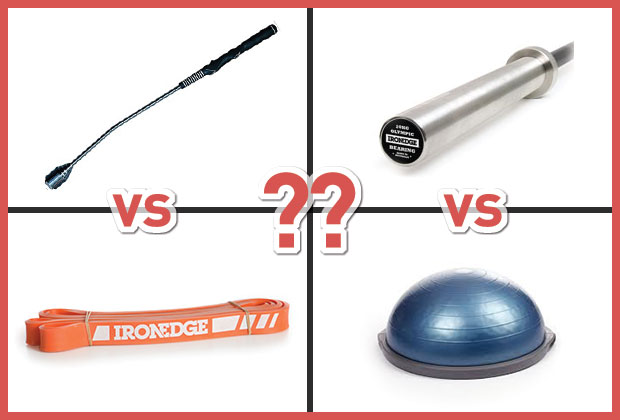
This is a light-hearted look at the five best and five worst pieces of gym/fitness equipment that you can use for your golf fitness routine.
I have personally used, experimented with, been given the sales spiel and watched the dodgy YouTube ads for every piece of equipment on these two lists.
How did the respective pieces of equipment qualify for their placing on the respective good and bad categories? They were put through an extremely subjective and moderately rigorous scrutiny, which involved absolutely no scientific process whatsoever. It comes from gut feeling, player feedback, listening to what other trainers have to say and of course, good old common sense. I’ve looked past the pseudo-science, ignored the preposterous claims and simply cast my judgment as a golf fitness professional.
Although there was categorically no science and very few facts that went into the rating of the equipment, I did come up with a fun scoring system:
Each piece of equipment is given a score out of 5 in the following categories, producing a total score out of 35:
- Effectiveness
- Versatility
- Portability
- Application to golf posture and swing
- Cost
- Injury risk
- Chance of messing with swing mechanics
*The higher the number for each category, the better
The five lowest-scoring pieces of equipment were relegated to the “Worst Group” and the five best, promoted to the “Best Group.” I have included the score sheet at the end of the article.
To take a closer look at some of the items detailed, check out Golf Fit Pro.
So here they are, presented in order:
The Worst: No. 5 — Weighted Clubs
- Score: 21 out of 35
Rapidly going out of fashion in golf and in baseball, the donuts give false feeling of load during the swing and has been shown to slow non-weighted swing speed while encouraging off-center hits. If you want to move the club faster, why practice moving a weighted version more slowly using the same action?
The Best: No. 5 — Dumbells/Kettlebells
- Score: 26 out of 35
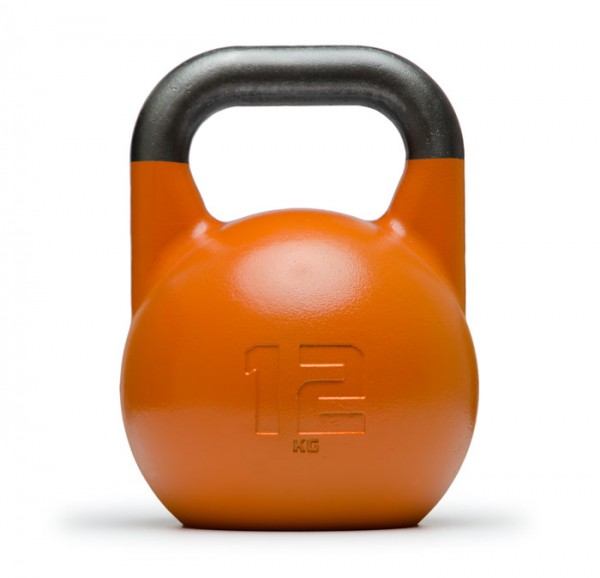 Timeless pieces of gym equipment that produce genuine gains in strength and power. These can be used in countless different ways with a wide variety of load. There’s a reason they have been around for for years and yet still remain popular.
Timeless pieces of gym equipment that produce genuine gains in strength and power. These can be used in countless different ways with a wide variety of load. There’s a reason they have been around for for years and yet still remain popular.
The Worst: No. 4 — Bosu Ball
- Score: 20 out of 35
Standing on the bosu ball will not magically “turn your core on” and help you with your golf swing. It’s more likely to send your ankle stabilizers into overdrive, rather than the important core and hip stabilizers.
The Best: No. 4 — Soft Sand
- Score: 27 out of 35
Running, jumping and crawling in multiple directions in soft sand is highly effective for a number of reasons. Sand requires you to stabilize and balance with every step you take. But because sand has no reactive force, we can’t rely on the ankle and wrist stabilizers to do the job — now it’s up to our core, hamstrings, butt and shoulders to pick up the slack. It also smashes your lungs for cardio fitness and produces almost zero muscle soreness the next day.
The Worst: No. 3 — Somax Swing Trainer
- Score: 13 out of 35
I can see what they were trying to do here: train the hips to move quicker and you’ll swing the golf club faster. Unfortunately, it’s not that simple. Fast club head speed requires the kinematic sequence of the golf swing to work in harmony. Simply training the hips to move as fast as possible and hoping the rest of the body will hold on is fundamentally flawed. Also I see a high potential injury risk while using this piece of kit. Lower backs look out!
The Best: No. 3 — Suspension Trainer
- Score: 30 out of 35
Young and old, fit and unfit, elite or amateur, the suspension trainer offers something for everybody with its ability to dramatically alter the load and difficulty of an exercise with simple body positioning. Core integration is needed in order to perform the exercises, plus hip and shoulder girdle stability are challenged and trained with the unstable nature of the straps. It’s portable, durable and fun to use.
The Worst: No. 2 — Pec Dec Machine
- Score: 12 out of 35
Tight pecs equals rounded and forward shoulders, which leads to impaired arm/body connection in the swing and ultimately funky swing actions to manipulate the club face. In terms of tightening pecs and rounding shoulders, the pec dec is king and, in my opinion, should be given a wide berth and left well alone.
The Best: No. 2 — Power Bands
- Score: 32 out of 35
These beauties have much of the same positive characteristic as the Suspension Trainer, that is: portable, durable, versatile, scalable to different levels of people and great for training with a partner.
Two features see them ranked higher though:
- The resistance increases the further you move into a resisted position. This means the exercise gets harder as you get to the least stable point of the movement, pure gold for stabilizer muscles.
- They can be used to simultaneously support and encourage muscles and joints into positions that they wouldn’t otherwise be capable of. Leveraged properly, this means increased mobility in the key golf areas of the shoulder, mid/upper back and hips.
The Worst: No. 1 — Home Ab Machine
- Score: 11 out of 35
Even setting aside the cringeworthy TV ads selling you lies, this equipment is the worst! The last thing a seated and sedentary society needs to do is be hunched over and crunncing ourselves into oblivion. The one that goes straight up and down is bad, it will shorten your already chronically tight abs and hip flexors and pull you into a more hunched posture.
The side-to-side version is the absolute pits for golfers. In a sport where the majority of people already have too much lateral flexion (side bend) in their swings, the last thing we want to be doing is repeating this action over-and-over again. It trains poor movement patterns, puts you at significant risk of low back injury and no, sorry, it won’t make your love handles melt away like butter.
The Best: No. 1 — Postural Training Aids
- Score: 33 out of 35
Posture, Posture, Posture. I talk about it a lot, but it’s hard to stress how strongly I feel about training posture and dynamic rotation movement patterns. Without proper set up, it’s almost impossible to move well during your golf swing. Like anything, good set up posture is trained, not just assumed. These pieces of equipment have been designed for this exact purpose. They can be used anywhere and by anyone to directly assist the most important part of their golf swing — posture and quality rotation.
Conclusion
So there we have it. I’m sorry if I criticized your favorite piece of gear and caused you to question its inclusion in your gym routine. Hopefully it will encourage you to relegate it to the garage and pick up something useful instead!
On the flipside, I’m happy if I validated what you already use or even inspired you to add a couple of useful items to your golf fitness equipment kit.
Check out Golf Fit Pro to take a closer look at some of the items detailed above.
Best and Worst Equipment Scoring Sheet
- LIKE94
- LEGIT21
- WOW9
- LOL14
- IDHT5
- FLOP7
- OB4
- SHANK69
19th Hole
Vincenzi’s 2024 Zurich Classic of New Orleans betting preview

The PGA TOUR heads to New Orleans to play the 2023 Zurich Classic of New Orleans. In a welcome change from the usual stroke play, the Zurich Classic is a team event. On Thursday and Saturday, the teams play best ball, and on Friday and Sunday the teams play alternate shot.
TPC Louisiana is a par 72 that measures 7,425 yards. The course features some short par 4s and plenty of water and bunkers, which makes for a lot of exciting risk/reward scenarios for competitors. Pete Dye designed the course in 2004 specifically for the Zurich Classic, although the event didn’t make its debut until 2007 because of Hurricane Katrina.
Coming off of the Masters and a signature event in consecutive weeks, the field this week is a step down, and understandably so. Many of the world’s top players will be using this time to rest after a busy stretch.
However, there are some interesting teams this season with some stars making surprise appearances in the team event. Some notable teams include Patrick Cantlay and Xander Schauffele, Rory McIlroy and Shane Lowry, Collin Morikawa and Kurt Kitayama, Will Zalatoris and Sahith Theegala as well as a few Canadian teams, Nick Taylor and Adam Hadwin and Taylor Pendrith and Corey Conners.
Past Winners at TPC Louisiana
- 2023: Riley/Hardy (-30)
- 2022: Cantlay/Schauffele (-29)
- 2021: Leishman/Smith (-20)
- 2019: Palmer/Rahm (-26)
- 2018: Horschel/Piercy (-22)
- 2017: Blixt/Smith (-27)
2024 Zurich Classic of New Orleans Picks
Tom Hoge/Maverick McNealy +2500 (DraftKings)
Tom Hoge is coming off of a solid T18 finish at the RBC Heritage and finished T13 at last year’s Zurich Classic alongside Harris English.
This season, Hoge is having one of his best years on Tour in terms of Strokes Gained: Approach. In his last 24 rounds, the only player to top him on the category is Scottie Scheffler. Hoge has been solid on Pete Dye designs, ranking 28th in the field over his past 36 rounds.
McNealy is also having a solid season. He’s finished T6 at the Waste Management Phoenix Open and T9 at the PLAYERS Championship. He recently started working with world renowned swing coach, Butch Harmon, and its seemingly paid dividends in 2024.
Keith Mitchell/Joel Dahmen +4000 (DraftKings)
Keith Mitchell is having a fantastic season, finishing in the top-20 of five of his past seven starts on Tour. Most recently, Mitchell finished T14 at the Valero Texas Open and gained a whopping 6.0 strokes off the tee. He finished 6th at last year’s Zurich Classic.
Joel Dahmen is having a resurgent year and has been dialed in with his irons. He also has a T11 finish at the PLAYERS Championship at TPC Sawgrass which is another Pete Dye track. With Mitchell’s length and Dahmen’s ability to put it close with his short irons, the Mitchell/Dahmen combination will be dangerous this week.
Taylor Moore/Matt NeSmith +6500 (DraftKings)
Taylor Moore has quickly developed into one of the more consistent players on Tour. He’s finished in the top-20 in three of his past four starts, including a very impressive showing at The Masters, finishing T20. He’s also finished T4 at this event in consecutive seasons alongside Matt NeSmith.
NeSmith isn’t having a great 2024, but has seemed to elevate his game in this format. He finished T26 at Pete Dye’s TPC Sawgrass, which gives the 30-year-old something to build off of. NeSmith is also a great putter on Bermudagrass, which could help elevate Moore’s ball striking prowess.
- LIKE6
- LEGIT1
- WOW1
- LOL0
- IDHT0
- FLOP2
- OB1
- SHANK1
19th Hole
Vincenzi’s 2024 LIV Adelaide betting preview: Cam Smith ready for big week down under

After having four of the top twelve players on the leaderboard at The Masters, LIV Golf is set for their fifth event of the season: LIV Adelaide.
For both LIV fans and golf fans in Australia, LIV Adelaide is one of the most anticipated events of the year. With 35,000 people expected to attend each day of the tournament, the Grange Golf Club will be crawling with fans who are passionate about the sport of golf. The 12th hole, better known as “the watering hole”, is sure to have the rowdiest of the fans cheering after a long day of drinking some Leishman Lager.
The Grange Golf Club is a par-72 that measures 6,946 yards. The course features minimal resistance, as golfers went extremely low last season. In 2023, Talor Gooch shot consecutive rounds of 62 on Thursday and Friday, giving himself a gigantic cushion heading into championship Sunday. Things got tight for a while, but in the end, the Oklahoma State product was able to hold off The Crushers’ Anirban Lahiri for a three-shot victory.
The Four Aces won the team competition with the Range Goats finishing second.
*All Images Courtesy of LIV Golf*
Past Winners at LIV Adelaide
- 2023: Talor Gooch (-19)
Stat Leaders Through LIV Miami
Green in Regulation
- Richard Bland
- Jon Rahm
- Paul Casey
Fairways Hit
- Abraham Ancer
- Graeme McDowell
- Henrik Stenson
Driving Distance
- Bryson DeChambeau
- Joaquin Niemann
- Dean Burmester
Putting
- Cameron Smith
- Louis Oosthuizen
- Matt Jones
2024 LIV Adelaide Picks
Cameron Smith +1400 (DraftKings)
When I pulled up the odds for LIV Adelaide, I was more than a little surprised to see multiple golfers listed ahead of Cameron Smith on the betting board. A few starts ago, Cam finished runner-up at LIV Hong Kong, which is a golf course that absolutely suits his eye. Augusta National in another course that Smith could roll out of bed and finish in the top-ten at, and he did so two weeks ago at The Masters, finishing T6.
At Augusta, he gained strokes on the field on approach, off the tee (slightly), and of course, around the green and putting. Smith able to get in the mix at a major championship despite coming into the week feeling under the weather tells me that his game is once again rounding into form.
The Grange Golf Club is another course that undoubtedly suits the Australian. Smith is obviously incredibly comfortable playing in front of the Aussie faithful and has won three Australian PGA Championship’s. The course is very short and will allow Smith to play conservative off the tee, mitigating his most glaring weakness. With birdies available all over the golf course, there’s a chance the event turns into a putting contest, and there’s no one on the planet I’d rather have in one of those than Cam Smith.

Louis Oosthuizen +2200 (DraftKings)
Louis Oosthuizen has simply been one of the best players on LIV in the 2024 seas0n. The South African has finished in the top-10 on the LIV leaderboard in three of his five starts, with his best coming in Jeddah, where he finished T2. Perhaps more impressively, Oosthuizen finished T7 at LIV Miami, which took place at Doral’s “Blue Monster”, an absolutely massive golf course. Given that Louis is on the shorter side in terms of distance off the tee, his ability to play well in Miami shows how dialed he is with the irons this season.
In addition to the LIV finishes, Oosthuizen won back-to-back starts on the DP World Tour in December at the Alfred Dunhill Championship and the Mauritus Open. He also finished runner-up at the end of February in the International Series Oman. The 41-year-old has been one of the most consistent performers of 2024, regardless of tour.
For the season, Louis ranks 4th on LIV in birdies made, T9 in fairways hit and first in putting. He ranks 32nd in driving distance, but that won’t be an issue at this short course. Last season, he finished T11 at the event, but was in decent position going into the final round but fell back after shooting 70 while the rest of the field went low. This season, Oosthuizen comes into the event in peak form, and the course should be a perfect fit for his smooth swing and hot putter this week.

- LIKE10
- LEGIT2
- WOW0
- LOL0
- IDHT0
- FLOP0
- OB0
- SHANK0
Opinion & Analysis
The Wedge Guy: What really makes a wedge work? Part 1

Of all the clubs in our bags, wedges are almost always the simplest in construction and, therefore, the easiest to analyze what might make one work differently from another if you know what to look for.
Wedges are a lot less mysterious than drivers, of course, as the major brands are working with a lot of “pixie dust” inside these modern marvels. That’s carrying over more to irons now, with so many new models featuring internal multi-material technologies, and almost all of them having a “badge” or insert in the back to allow more complex graphics while hiding the actual distribution of mass.
But when it comes to wedges, most on the market today are still single pieces of molded steel, either cast or forged into that shape. So, if you look closely at where the mass is distributed, it’s pretty clear how that wedge is going to perform.
To start, because of their wider soles, the majority of the mass of almost any wedge is along the bottom third of the clubhead. So, the best wedge shots are always those hit between the 2nd and 5th grooves so that more mass is directly behind that impact. Elite tour professionals practice incessantly to learn to do that consistently, wearing out a spot about the size of a penny right there. If impact moves higher than that, the face is dramatically thinner, so smash factor is compromised significantly, which reduces the overall distance the ball will fly.
Every one of us, tour players included, knows that maddening shot that we feel a bit high on the face and it doesn’t go anywhere, it’s not your fault.
If your wedges show a wear pattern the size of a silver dollar, and centered above the 3rd or 4th groove, you are not getting anywhere near the same performance from shot to shot. Robot testing proves impact even two to three grooves higher in the face can cause distance loss of up to 35 to 55 feet with modern ‘tour design’ wedges.
In addition, as impact moves above the center of mass, the golf club principle of gear effect causes the ball to fly higher with less spin. Think of modern drivers for a minute. The “holy grail” of driving is high launch and low spin, and the driver engineers are pulling out all stops to get the mass as low in the clubhead as possible to optimize this combination.
Where is all the mass in your wedges? Low. So, disregarding the higher lofts, wedges “want” to launch the ball high with low spin – exactly the opposite of what good wedge play requires penetrating ball flight with high spin.
While almost all major brand wedges have begun putting a tiny bit more thickness in the top portion of the clubhead, conventional and modern ‘tour design’ wedges perform pretty much like they always have. Elite players learn to hit those crisp, spinny penetrating wedge shots by spending lots of practice time learning to consistently make contact low in the face.
So, what about grooves and face texture?
Grooves on any club can only do so much, and no one has any material advantage here. The USGA tightly defines what we manufacturers can do with grooves and face texture, and modern manufacturing techniques allow all of us to push those limits ever closer. And we all do. End of story.
Then there’s the topic of bounce and grinds, the most complex and confusing part of the wedge formula. Many top brands offer a complex array of sole configurations, all of them admittedly specialized to a particular kind of lie or turf conditions, and/or a particular divot pattern.
But if you don’t play the same turf all the time, and make the same size divot on every swing, how would you ever figure this out?
The only way is to take any wedge you are considering and play it a few rounds, hitting all the shots you face and observing the results. There’s simply no other way.
So, hopefully this will inspire a lively conversation in our comments section, and I’ll chime in to answer any questions you might have.
And next week, I’ll dive into the rest of the wedge formula. Yes, shafts, grips and specifications are essential, too.
- LIKE31
- LEGIT7
- WOW1
- LOL1
- IDHT2
- FLOP3
- OB1
- SHANK3
-

 19th Hole2 weeks ago
19th Hole2 weeks agoDave Portnoy places monstrous outright bet for the 2024 Masters
-

 19th Hole2 weeks ago
19th Hole2 weeks agoTiger Woods arrives at 2024 Masters equipped with a putter that may surprise you
-

 19th Hole17 hours ago
19th Hole17 hours ago‘Absolutely crazy’ – Major champ lays into Patrick Cantlay over his decision on final hole of RBC Heritage
-

 19th Hole3 weeks ago
19th Hole3 weeks agoReport: Tiger Woods has ‘eliminated sex’ in preparation for the 2024 Masters
-

 19th Hole1 week ago
19th Hole1 week agoTwo star names reportedly blanked Jon Rahm all week at the Masters
-

 19th Hole7 days ago
19th Hole7 days agoReport: LIV Golf identifies latest star name they hope to sign to breakaway tour
-

 19th Hole1 week ago
19th Hole1 week agoNeal Shipley presser ends in awkward fashion after reporter claims Tiger handed him note on 8th fairway
-

 19th Hole6 days ago
19th Hole6 days agoBrandel Chamblee has ‘no doubt’ who started the McIlroy/LIV rumor and why

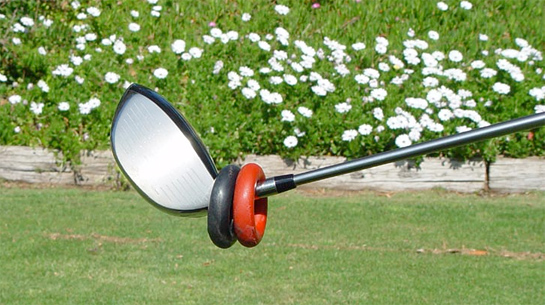
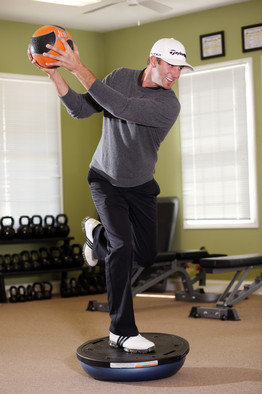
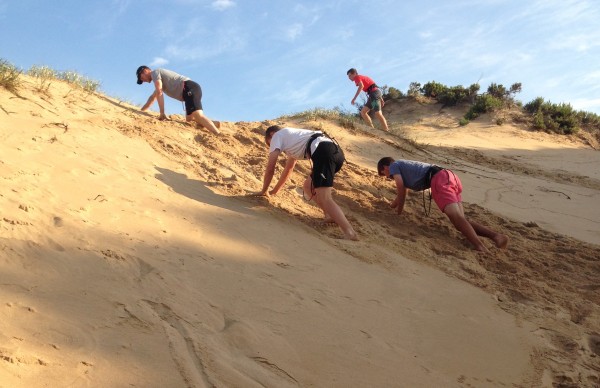
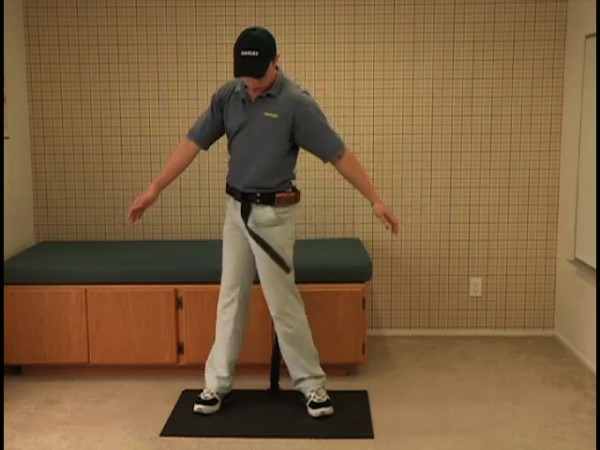

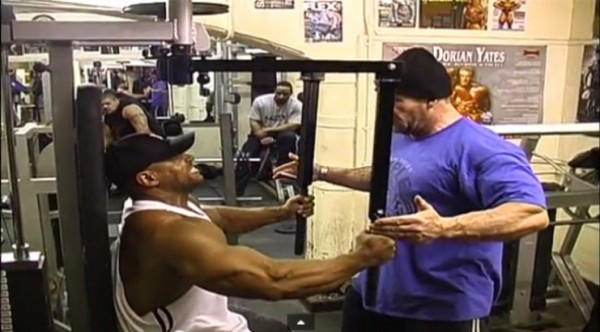
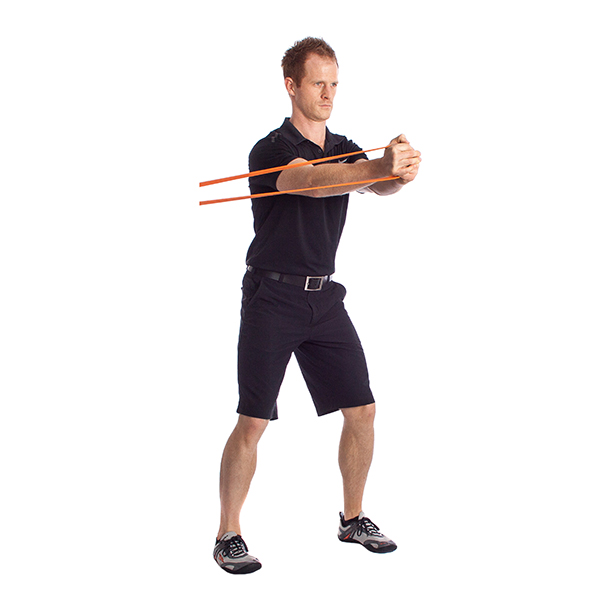
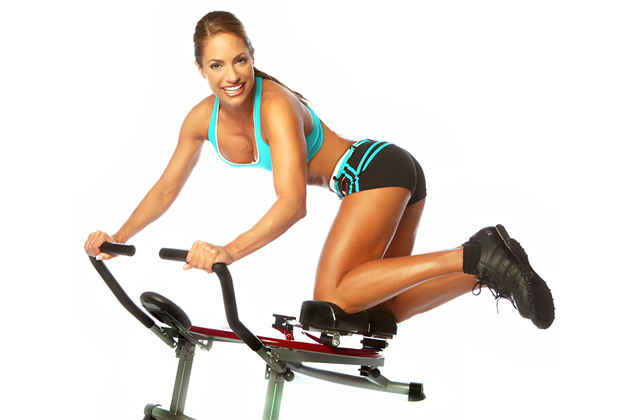
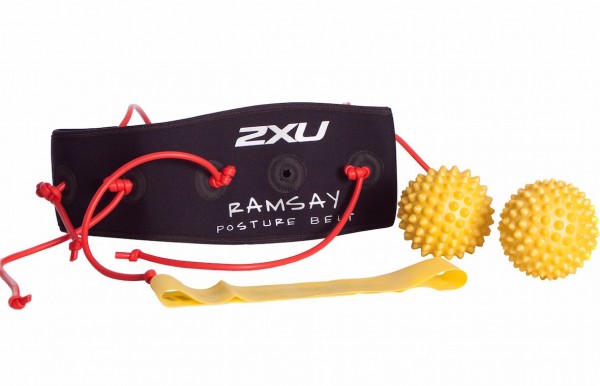
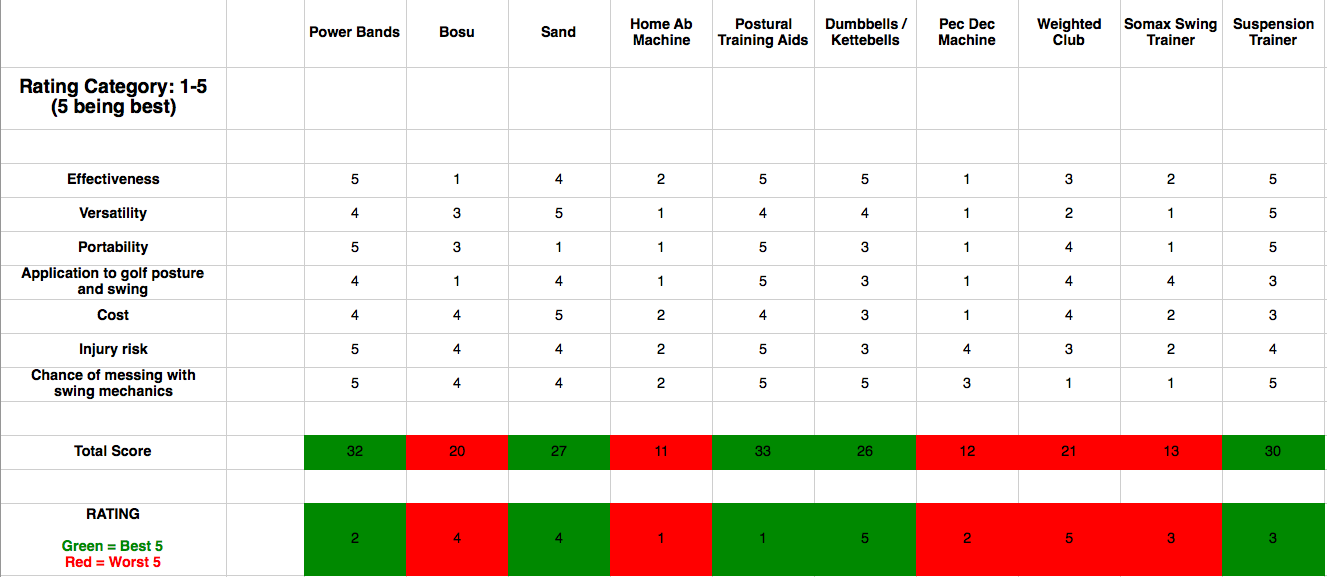


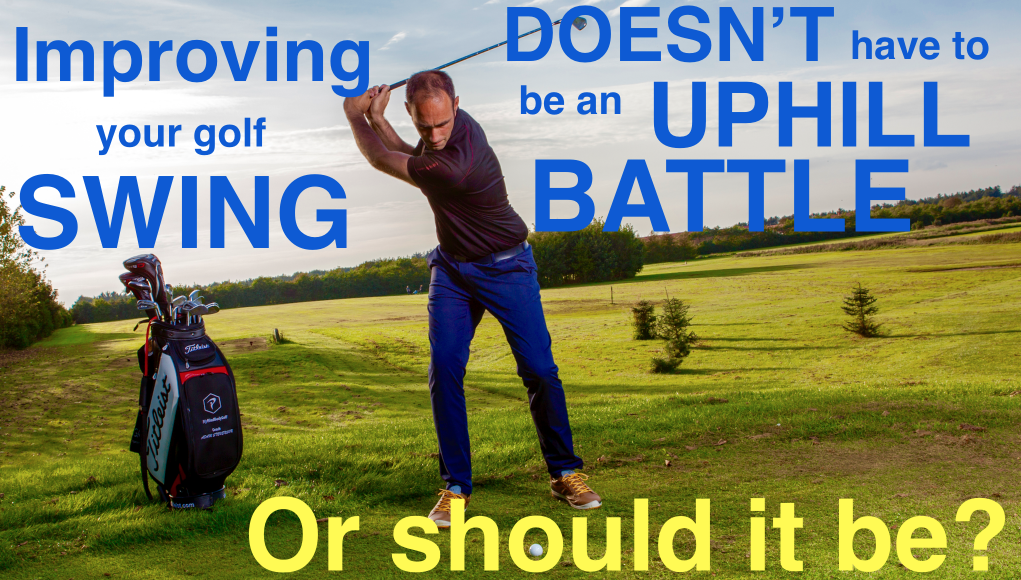
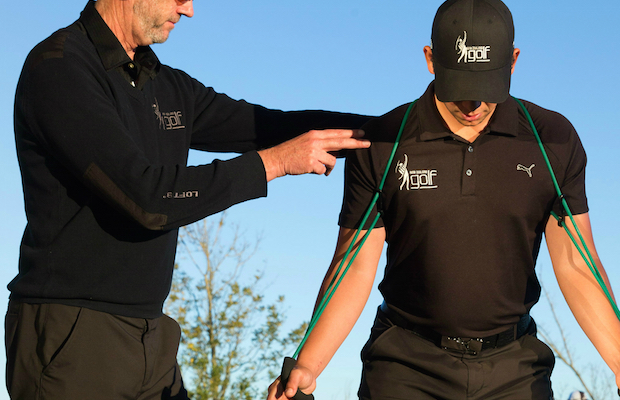
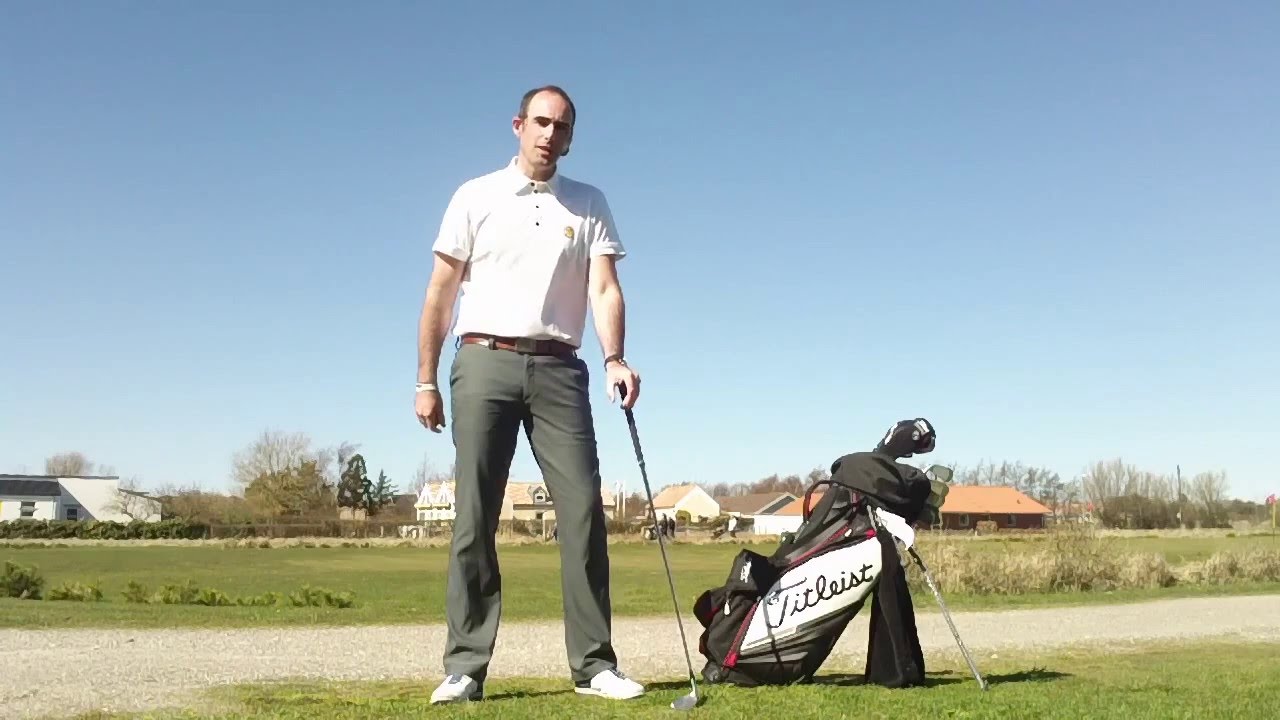
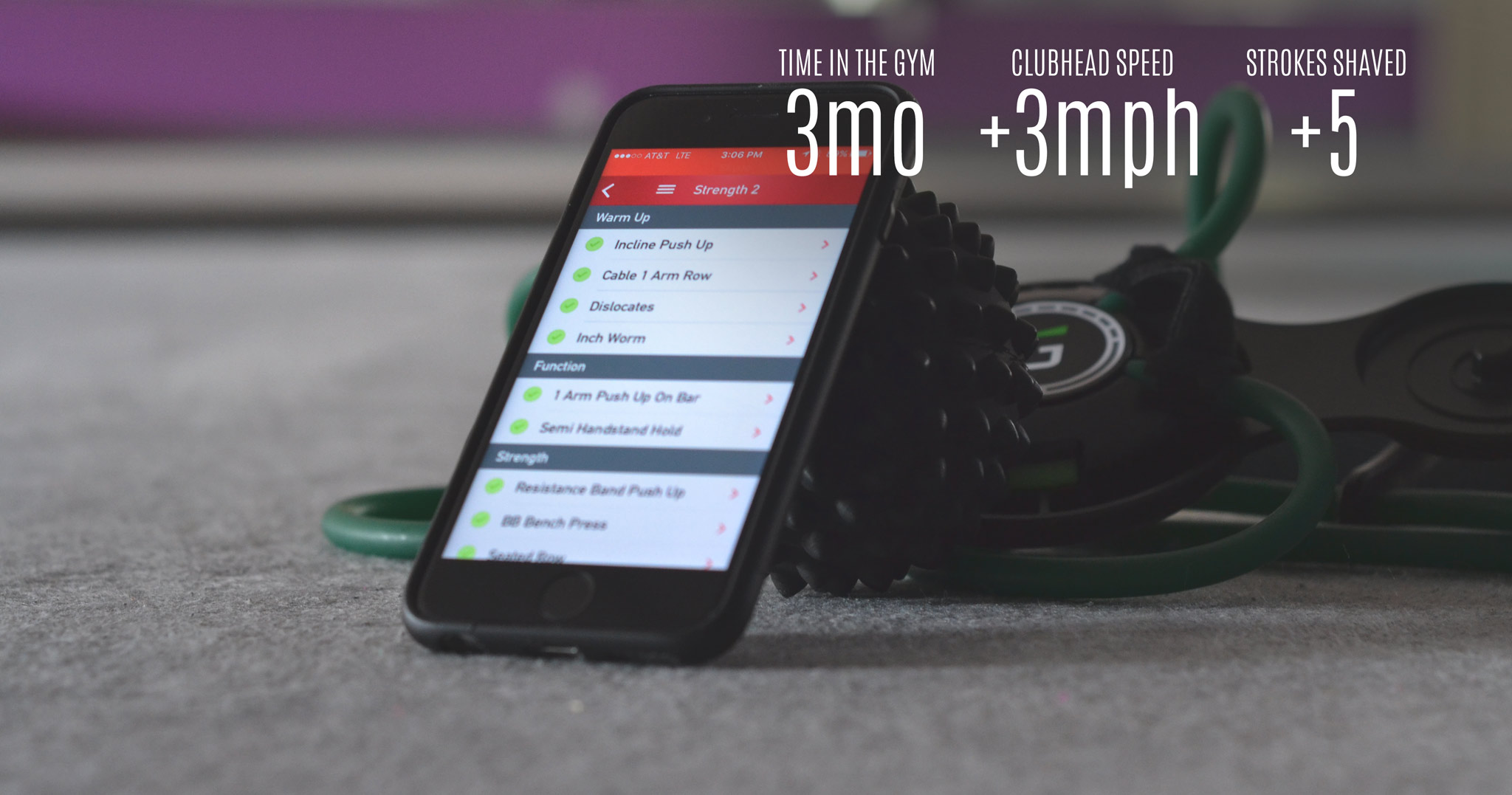
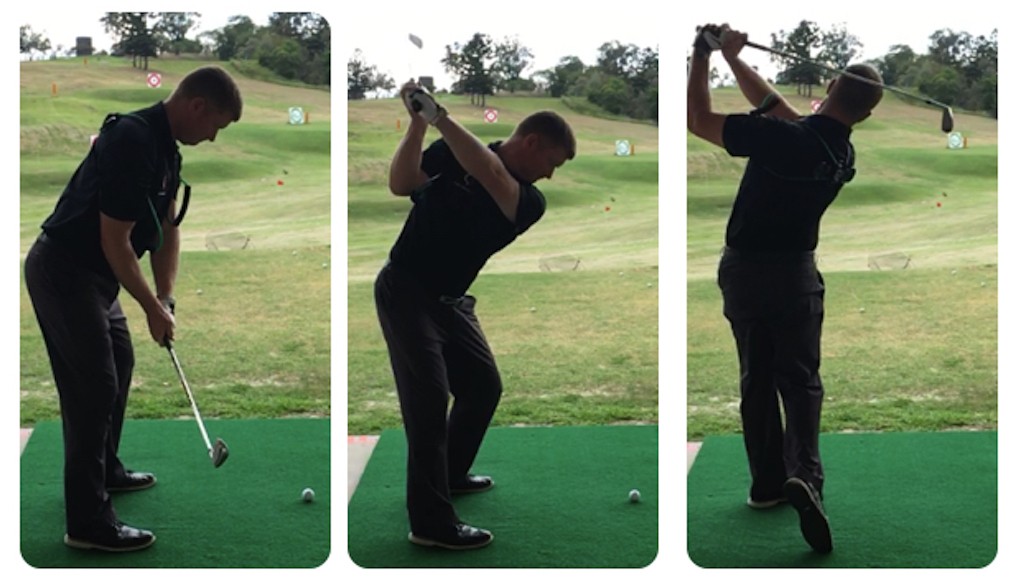
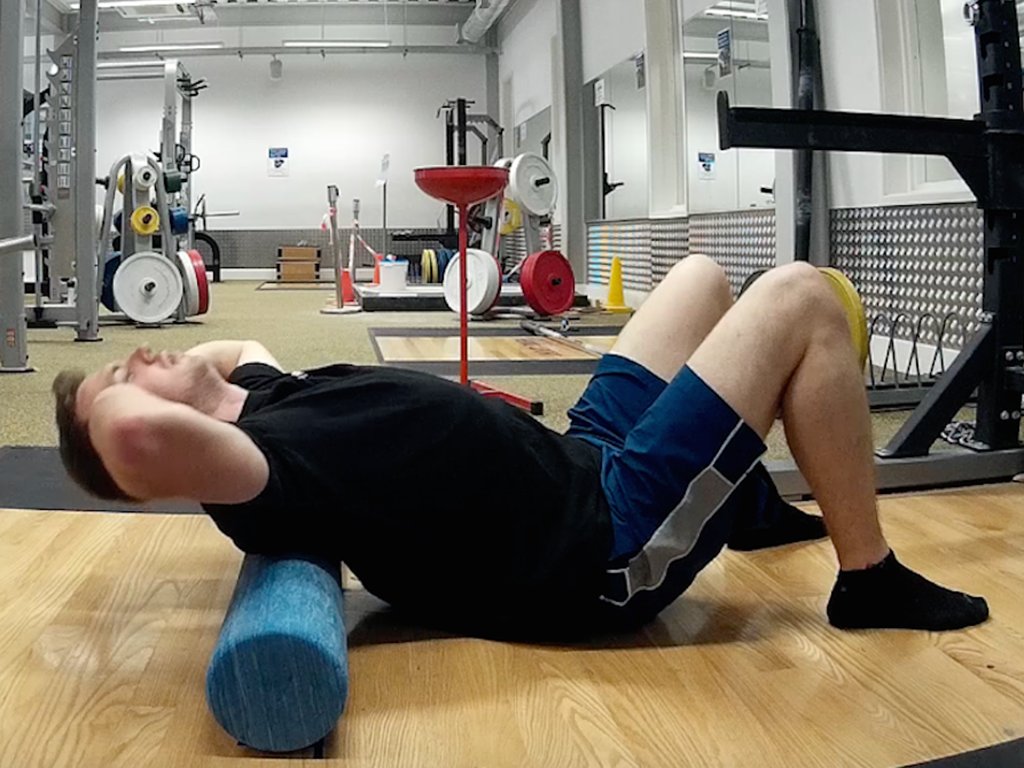












Pingback: Equipment For Golf Fitness: The 5 Best and 5 Worst | GolfWRX | 40100sports
Nathan
Apr 2, 2015 at 8:32 am
Whether or not everyone agrees with this list, it is nice to see fitness being discussed on wrx. Nick makes some good suggestions. Obviously in a short article, he cannot go into full detail about each item, but his thoughts are mostly spot-on. Nice job, Nick!
Nick Randall
Apr 3, 2015 at 1:11 am
Cheers Nathan!
I was always going to rub a few people up the wrong way with Bosu Ball and Weighted Club. But if we all thought the same way, the world would be a boring place!
Mbwa Kali Sana
Apr 1, 2015 at 3:10 pm
A very biaised assesment of training aids :the best are not even mentioned ,such as the OVERSPEED /UNDERSPEED clubs :everybody should know that to train effectively the “Fast Twitch muscle fibers ” you have to “trick” them by swinging a club sllghtly more heavy ,then a club slightly less heavy ,at random(See the SUPERSPEED Sticks by MIKE NAPOLEON) .Speed training is essential ,don’t move slowly ,short bursts of the “SWING CHAIN “or the “TORSO BURNER”give you speed ,versatilty and strength .The best rubber bands are the “ULTIMATE SWING TRAINER “rubber tubes by MIKE BAUMANN.See also the” SPEED BALL or” XLR8R” “by JOHN NOVOSEL and his famous “TOUR TEMPO ” …Isometric exercises develops strength ,no need to utilize heavy weights:just get a “BULLWORKER” and you’ll see your streghth grow almost magically .This training device is 60 years old ….
Nick Randall
Apr 1, 2015 at 7:16 pm
Hi Mbwa, It was really more of an article on golf FITNESS equipment, not training aids. I don’t claim to have expertise in the training aids area, hence why I missed some of your favourites.
Cheers,
Nick
Scott
Apr 1, 2015 at 12:31 pm
I am not one to normally comment on exercise equipment. Unless something is dangerous to use, what ever gets you motivated to work out is great. However, I just looked at the posture belt you tube training video and it looks ridiculous. It may work, but most of the other stuff mentioned looks like it would be more effective.
Most people do not truly understand what good posture is. Stand up straight and hold in your stomach, as if you are getting ready to be punched in the gut. Keep breathing. hold that for as long as you can and work your way up in the amount of time you can hold it. You can even do it in a chair. That is proper posture and the exercise works the inner layers of or abdominal muscles. That exercise has made a HUGE difference in my posture.
Nick Randall
Apr 1, 2015 at 7:18 pm
Hi Scott,
Nice suggestions and definitely along the right track. What your suggesting sounds like a little too much bracing with superficial muscles (obliques especially) however. This is likely to inhibit dynamic rotation, look out for an upcoming article from me on how to effectively train golf posture
Cheers
Nick
Steven Thomas
Apr 1, 2015 at 12:12 pm
I have swung a weighted club for years. The current club I have weighs 5 pounds. I swing this several times a day and right before I go play. I saw a Golf Channel show when they were talking to Gary Player. He says he swings a weighted club everyday, as do many pros.
Nick Randall
Apr 1, 2015 at 7:20 pm
Hi Steven,
There are lots of people who support using a weighted club, I’m just one of them. When considering the research plus feedback form players and coaches, it just doesn’t seem like the right way to go.
cheers
Nick
zoots
Mar 31, 2015 at 10:02 pm
I’m thinking of buying a swing fan. Would this be the same as a weighted club, therefore a no-no?
Jack
Apr 1, 2015 at 2:33 am
I’ve had a swing fan before. If you want to increase your swing speed, I think it’s legit to help you make the jump. But you needs to consistently keep swinging at that speed. Most of the time after I use it, I think it messes up my swing a tempo a lot.
zoots
Apr 2, 2015 at 12:26 am
Thanks for the info, Jack
Nick Randall
Apr 1, 2015 at 7:22 pm
Hi Zoots,
I would say that it depends on what you use it for. Training swing feels from top of backswing to impact – go for it. Trying to generate more clubhead speed – maybe not.
Cheers
Nick
zoots
Apr 2, 2015 at 12:27 am
Thanks Nick. I’ll take that into consideration
Tony Lynam
Apr 21, 2015 at 8:35 am
I have used a swing fan for over 15 years and it has to be one of the best training aids for increasing and maintaining swing speed. I am 52 years old, 4 hcp and clock out at a 110-115 swing speed. I have also utilized the Momentus weighted club during that 15 years and recently added an Orange Whip swing trainer for tempo work in the last year.
David
Apr 24, 2015 at 3:51 pm
Great choices! The orange whip is a huge omission regarding the article.
luckbox
Mar 31, 2015 at 8:22 pm
I am confused how rounded shoulders and tight pecs would lead to a improper swing. Sure you do not want to look like Ronnie Coleman or Jay Cutler (Mr Olympia not Mr. Choke-Artist) but tight pecs and strong shoulders are prevalent in two of the most dominant golfers 2000 Tiger and current Rory.
Nick Randall
Apr 1, 2015 at 7:24 pm
Hi Luckbox,
Be careful not to confuse TIGHT with STRONG. You can be still be strong and have pecs that are not adaptively shortened and impeding shoulder function. By all means, train your chest and shoulders, just use dumbbells, barbells and push up variations instead of the pec dec.
Hope this helps
Nick
Steve
Mar 31, 2015 at 4:43 pm
If that was how you used the Bosu Ball then I would agree. Try turning it over and sitting on it and then do your ab workout or doing planks/side planks with your feet on it or even harder with your elbows on it. lie on it to do lower back extensions. Also if you do squats with both of your feet on it your quads, glutes and hip stabilizers all come into play without as much pressure on your ankles. Do pushups with your hands holding the sides. It only takes up a small space and used correctly in combination with suspension training it’s a great workout.
Erik
Mar 31, 2015 at 4:42 pm
Power bands should be on the worst end and kettlebells should be best no 1. You obviously haven’t studied the TGU, goblet squat, and swing enough.
Regis
Apr 1, 2015 at 11:03 am
I personally disagree, at least to some extent. I’m no fitness buff but I do try to work out and a lot of it is golf related. When healthy I think kettle bells are the best but there is a learning curve. I have also had to rehab following a number of serious surgeries and for a person with limited space (hospital room, apartment) or one who travels nothing beats a quality set of power bands. If I had to pick one exercise aid for overall versatility, portability, flexibility and longevity (we all get older) it would be power bands but you have to purchase a quality set
James
Apr 1, 2015 at 11:31 am
Regis,
What brand/set of power bands would you recommend?
Thanks
Regis
Apr 2, 2015 at 10:38 pm
I like SPRI Xrtubes because they have good handles and door attachments but there are a lot of good options out there. Just look for quality door attachments and good handles. There are a lot of fitness sites you could explore
Jeremy
Mar 31, 2015 at 4:38 pm
After rehabbing from knee surgery I’ve had good results with the bosu ball. It’s been great for my balance, and when you do more than just stand on it it can provide a great core workout. Posture and form are important though. I think they’re overpriced so I wouldn’t buy one for my home, but I always use it at the gym.
MJ
Mar 31, 2015 at 4:33 pm
I would think any balance exercise would be good for golf. Where are you teaching crossfit?
Good article I like the posture drills
4pillars
Mar 31, 2015 at 2:43 pm
I tried putting the Kettlebell at the end of my golf club but they just fell off.
The neighbour downstairs was not too pleased.
Me Nunya
Mar 31, 2015 at 4:49 pm
Lel
TR1PTIK
Mar 31, 2015 at 11:35 am
I understand the concern for the pec dec for most, but when followed with a proper back workout and ample stretching, I don’t see the issue. The main issue I see with working the pectoral muscles is that they could impede the swing if you bulk up too much.
Nolanski
Mar 31, 2015 at 11:48 am
When I was big into [smart & safe]weight training, I always deemed chest flys as too dangerous. They had rotator cuff injury written all over it and there were just many more chest exercises that were safer and more effective. To each his own though.
TR1PTIK
Mar 31, 2015 at 1:10 pm
Rotator cuff injury makes sense for that exercise. I still do them though. I just don’t use a ton of weight and I stop when something doesn’t feel right. As long as people work at their own pace, and are smart enough to know the difference between growing pains and injury pains then do what you want. As far as Americans are concerned – almost any exercise is good exercise.
Nolanski
Mar 31, 2015 at 10:55 am
You arent kidding about the ankle stabilizers on the BOSU ball! Luckily my ankles are like oak trees or I’d be afraid of them snapping. I must not be doing that power band pose in the picture because I’ve done that one and it felt like it didnt do anything for me. I’ll try it again with stronger bands I guess.
Ronald Montesano
Mar 31, 2015 at 10:35 am
Nick…I hope there is a follow-up on postural training aids, so we can understand why and how they work. Thanks, mate.
Cyd
Mar 31, 2015 at 11:03 am
+1
Boo
Mar 31, 2015 at 12:27 pm
+2
Nick Randall
Apr 1, 2015 at 7:27 pm
Hey Ron,
Sure thing buddy, I’ll start working on that! Hope you are well mate,
Cheers
Nick